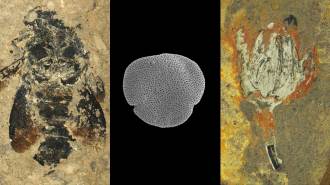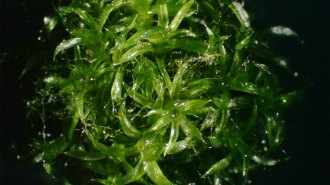A quirk of northern forests may shorten the time that wildflowers have in early spring to soak up bright sunlight reaching the forest floor. They harvest light for making seeds this year and for next year’s initial phases of growth. All too soon, the trees overhead spread their leaves and block out the sun.

The little red wildflower Trillium erectum takes rising soil temperatures in the Spring as its cue to emerge, according to Marie-Claude Routhier and Line Lapointe of Laval University in Ste-Foy, Canada. The researchers compared trillium patches in three maple forests at increasingly northerly latitudes in Quebec. At all the patches, the plants broke out of the ground when the soil temperature reached about 6.7C.
The trilliums may respond to soil temperature uniformly no matter the latitude, but latitude does matter to maple trees. Routhier and Lapointe discovered that sugar maples at the northernmost site in the study filled out their leaves at lower temperatures than did the same species farther south. Those precocious northern maples reduced the trillium’s vital window of bright sun to 2 weeks instead of 4 to 5 weeks at the southernmost site. That tendency may limit how far north an early spring flower can grow, the researchers propose in the March American Journal of Botany.






